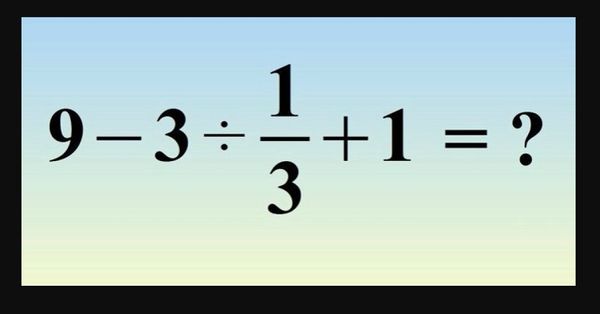Have you ever come across a math problem that seemed impossible to solve? Well, you’re not alone. Many people have tried to crack this particular math equation, but most have failed. It’s a challenge that has sparked a lot of debate and discussion on the internet. And if you’re a math enthusiast, this problem will definitely pique your interest.

The problem is not lengthy, but it requires you to think quickly and use your math skills. Solving it will transport you back to your high school days, where math problems like these used to occupy our minds. So, are you up for the challenge?
A study conducted by Japanese researchers at a university revealed that only sixty percent of engineers were able to solve this problem correctly. Even though thousands of engineers participated, only a little over half of them passed. Interestingly, the researchers found that some engineers lacked the fundamental arithmetic abilities needed to tackle this challenge.
Now, let’s take a look at the problem itself: 9 – 3 ÷ 1/3 + 1 = ?
To find the answer, you might be tempted to focus on the middle part of the equation before moving to the addition and subtraction. But is this the right strategy? Well, opinions vary.
Some people believe the answer is 9, while others rely on the classic PEMDAS rule. Remember PEMDAS? It stands for Parentheses, Exponents, Multiplication and Division (from left to right), and Addition and Subtraction (from left to right). However, things can get a bit tricky when invisible parentheses are involved.
To solve this problem successfully, you need to understand the properties of arithmetic operations, such as commutativity, associativity, and distributivity.
So, what’s the correct answer? Let’s break it down step by step. Start with 3 ÷ 1/3. Instead of moving to multiplication, focus on division. Dividing 3 by 1/3 gives you 9. Next, use a calculator to see that the product of 3 and 1/3 is equal to 1.
By following this approach, you’ll arrive at the correct answer. And if you need extra help, there are plenty of videos available that explain how to solve this specific type of math problem. You might even stumble upon heated arguments on the internet about the right answer.
In today’s digital age, puzzles and quizzes like this one provide not only a sense of adventure but also an opportunity to spark conversations and challenge our minds. So, go ahead and give it a try. Can you solve this math problem?





